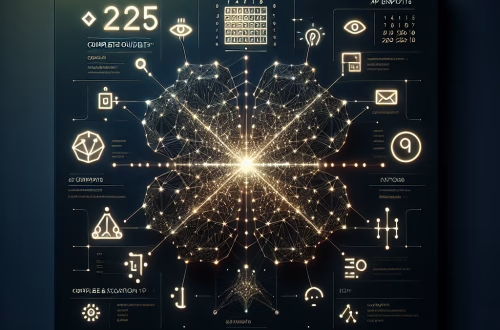Top AI Services for Virtual Assistants
Summary:
This article explores the top AI services powering modern virtual assistants, tools designed to automate tasks, answer queries, and enhance productivity. We examine platforms like Google Dialogflow, Amazon Lex, IBM Watson Assistant, Microsoft Azure Bot Service, and Rasa, highlighting their unique features, ideal use cases, and limitations. For businesses and developers new to AI, understanding these services is crucial for selecting the right tools to improve customer engagement or streamline operations. We’ll break down technical jargon, compare strengths and weaknesses, and provide actionable insights for novices navigating this rapidly evolving landscape.
What This Means for You:
- Lower Costs & Faster Deployment: AI services reduce the need for extensive coding expertise, allowing small businesses to deploy virtual assistants quickly. Leveraging pre-built templates from platforms like Dialogflow can save months of development time.
- Actionable Advice: Start Small, Scale Smart: Begin with narrow use cases (e.g., FAQ bots) using low-code tools like Amazon Lex. Monitor performance using built-in analytics, then expand functionality as you gain confidence.
- Actionable Advice: Prioritize Integration: Choose services compatible with your existing tech stack. Azure Bot Service excels for Microsoft-centric workflows, while Rasa offers flexibility for custom integrations.
- Future Outlook or Warning: As virtual assistants become more sophisticated, ethical concerns around data privacy and algorithmic bias grow. Companies must ensure transparency in AI decision-making and comply with regulations like GDPR to avoid reputational damage.
Top AI Services for Virtual Assistants
Understanding Virtual Assistant AI
Virtual assistants rely on AI services to process language, predict user intent, and execute tasks. These services combine natural language processing (NLP), machine learning (ML), and integration APIs to deliver human-like interactions. For novices, choosing the right platform depends on use cases, technical requirements, and scalability needs.
1. Google Dialogflow
Best For: Small-to-medium businesses, voice/text chatbots, multilingual support.
Strengths: Intuitive visual interface, Google Cloud integration, and pre-trained ML models for 20+ languages. Its “Small Talk” feature handles casual conversations effortlessly.
2. Amazon Lex
Best For: AWS users, voice-first apps (e.g., Alexa skills), and cost-sensitive projects.
Strengths: Pay-as-you-go pricing, seamless integration with AWS Lambda for backend logic, and advanced speech recognition.
3. IBM Watson Assistant
Best For: Enterprise applications requiring deep industry customization (e.g., healthcare, finance).
Strengths: Robust data security, hybrid cloud deployment, and “Intent Variance” tools to handle ambiguous queries.
4. Microsoft Azure Bot Service
Best For: Large-scale enterprise bots, Microsoft Teams integrations, and multi-channel support.
Strengths: Tight integration with Microsoft 365, LUIS (Language Understanding) for advanced NLP, and proactive bot-to-human handoff.
5. Rasa Open Source
Best For: Developers seeking full control over AI models and data privacy.
Strengths: Open-source flexibility, on-premise deployment, and customizable ML pipelines.
Choosing the Right Service
Prioritize ease-of-use for simple chatbots (Dialogflow, Lex) and scalability for enterprise needs (Watson, Azure). Always test services through free tiers before committing. For budget-conscious teams, Lex’s pay-per-request model works well, while Rasa minimizes long-term costs for tech-savvy users. Remember: no service is universally “best”—align features with your goals.
People Also Ask About:
- “How much do AI virtual assistant services cost?” Costs vary widely. Dialogflow offers a free tier (up to 180 requests/min), while enterprise solutions like Watson can exceed $500/month. Lex charges $0.004 per voice request, making it ideal for low-volume projects.
- “Which service is best for small businesses?” Start with Dialogflow or Lex for affordability and ease. Use pre-built templates to handle FAQs or bookings without coding expertise.
- “Can I customize my AI assistant’s personality?” Yes! Tools like Watson Assistant allow tone and response-style adjustments. For advanced branding, Rasa lets you modify source code directly.
- “Do these services support multilingual bots?” Most do—Dialogflow supports 20+ languages natively. Azure and Watson require additional configuration for dialect variations.
Expert Opinion:
Virtual assistants built on these services are becoming indispensable, but ethical risks like biased training data persist. Companies must audit AI outputs regularly and implement fallback mechanisms for errors. Hybrid models combining rules-based logic with generative AI (like ChatGPT integrations) show promise for handling nuanced queries. However, over-reliance on third-party APIs can create vendor lock-in—balance convenience with control.
Extra Information:
- Dialogflow Documentation: A comprehensive guide to building chatbots with Dialogflow’s latest features and integration options.
- IBM’s NLP Guide: Explains core NLP concepts critical for optimizing virtual assistant performance.
- Amazon Lex Pricing Calculator: Breaks down cost scenarios to avoid budget surprises.
Related Key Terms:
- AI-powered chatbot services for customer support
- Voice-enabled virtual assistant platforms in the USA
- Enterprise-grade AI assistants with NLP
- Low-code AI tools for small businesses
- Secure virtual assistant AI services and data privacy
Check out our AI Model Comparison Tool here: AI Model Comparison Tool
*Featured image provided by Pixabay





